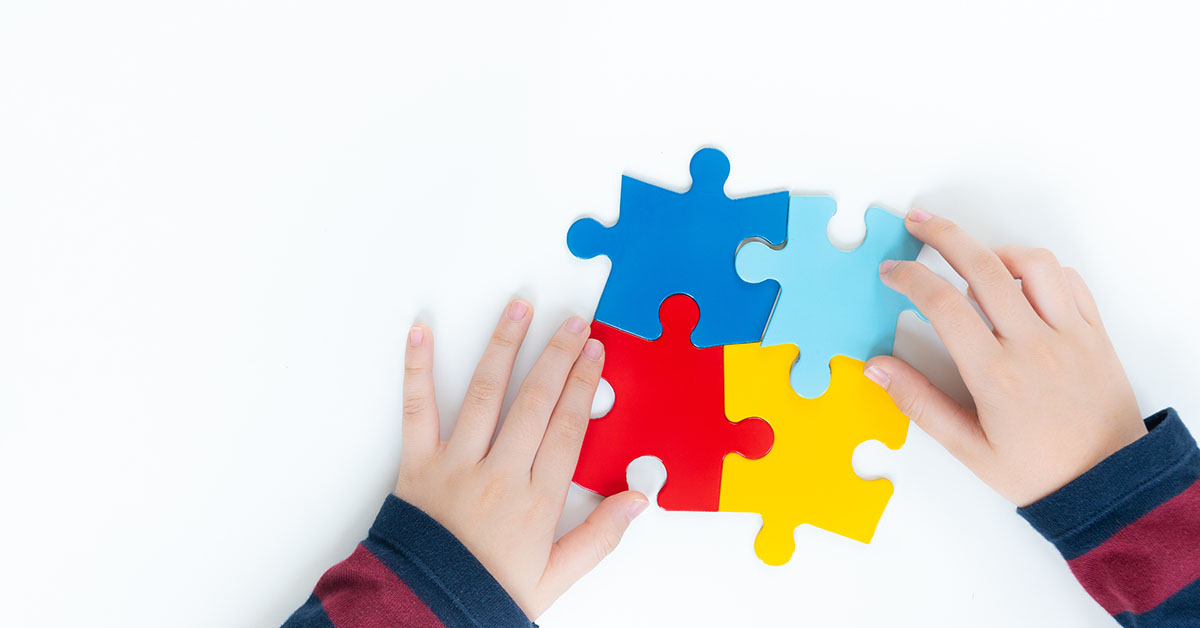Addressing Usual Misconceptions: What You Ought To Learn About Autism Today
Addressing Usual Misconceptions: What You Ought To Learn About Autism Today
Blog Article
Comprehending Autism: A Comprehensive Guide to Symptoms and indications
Autism Range Condition (ASD) includes a vast array of features that can considerably impact a person's social interactions and day-to-day performance. Identifying the indications and symptoms, such as difficulties with eye get in touch with, social communication troubles, and sensory level of sensitivities, is crucial for very early treatment. Comprehending these subtleties not just help caretakers and teachers in offering suitable support yet also cultivates a more inclusive setting for people with ASD. As we discover the complexities of autism, it ends up being important to think about just how these indications show up differently across the range and what implications they hold for effective intervention methods.
Introduction of Autism Spectrum Disorder
Defining Autism Range Disorder (ASD) includes identifying it as a complex neurodevelopmental condition characterized by a variety of challenges in social interaction, communication, and behavior patterns. The term "spectrum" shows the broad irregularity in signs and their intensity, which can differ significantly from one individual to another. ASD commonly shows up in very early youth, although some individuals might not obtain a medical diagnosis up until later in life.
Factors influencing the growth of ASD consist of environmental elements and genetic proneness, although the precise reasons stay under investigation. Medical diagnosis usually depends on behavior assessments, as there are no definitive medical tests for ASD. Early treatment is essential and can dramatically improve outcomes, focusing on boosting communication abilities, social communications, and flexible habits.
Individuals with ASD may likewise exhibit unique strengths, such as remarkable interest to information or details areas of expertise. Comprehending the diverse nature of ASD is important for fostering a comprehensive setting that suits neurodiversity. Continued study is vital for establishing efficient interventions and assistance systems, making it possible for individuals with ASD to thrive and satisfy their potential within society.
Typical Indicators of Autism
Recognizing the common indications of Autism Range Disorder (ASD) is crucial for very early recognition and intervention. These indicators can vary widely in extent and discussion, but particular characteristics are frequently observed in people with ASD.
One of one of the most widespread indicators is a significant problem in developing and maintaining eye get in touch with. Individuals might likewise display minimal passion in social communications and show a preference for solitary play. Recurring actions, such as hand-flapping, shaking, or spinning items, usually emerge early in youth. Furthermore, some kids might develop strict routines and end up being distressed if these routines are interfered with.
Sensory level of sensitivities are additionally common; people may overreact or underreact to sensory stimulations, such as lights, appearances, or sounds. autism. Language growth can be irregular, with some children exhibiting postponed speech or making use of language in unusual means, consisting of echolalia-- duplicating sentences or expressions heard somewhere else
It is vital to note that not every individual with ASD will display all these signs, and the degree of these habits can differ significantly. Early recognition enables prompt assistance and sources, boosting the lifestyle for those on the range.
Social Interaction Challenges
Social communication obstacles are a hallmark of Autism Range Condition (ASD), influencing an individual's capacity to engage effectively with others. These problems can manifest in various means, including difficulties in starting and maintaining discussions, recognizing social signs, and reacting suitably in social discover this info here communications.
Individuals with ASD might battle with nonverbal interaction, such as eye contact, facial expressions, and body language. This can cause misunderstandings, as their communicative intent may not be properly analyzed by others. They might find it challenging to comprehend the subtleties of tone and context, which are vital for effective interaction.
In team setups, people with ASD may really feel overloaded and may not understand how to sign up with in discussions (autism). They may also exhibit irregular conversational patterns, such as monologuing regarding certain passions without identifying social reciprocity
In addition, these challenges can cause social isolation or problems in forming connections, as peers might misunderstand their behavior or interaction style. Understanding these social communication obstacles is critical for cultivating supportive environments that advertise social skills development and enhance the quality of communications for people on the autism spectrum.
Sensory Feedbacks and level of sensitivities
Lots of individuals with Autism Range Condition (ASD) experience heightened sensory sensitivities that can significantly affect their day-to-day lives. A person with ASD may find day-to-day sounds, such as a vacuum cleanser or crowded atmospheres, overwhelmingly traumatic, leading to anxiousness or meltdowns.
Sensory handling distinctions in people with ASD can likewise impact their capacity to involve in social communications and routine tasks. A youngster who is sensitive to touch may stand up to physical affection or stay clear of particular apparel materials. Alternatively, a choice for particular appearances or preferences can limit dietary choices and develop obstacles throughout mealtimes.
Understanding these sensory level of sensitivities is crucial for acknowledging the distinct experiences of individuals with ASD. Awareness of their sensory profiles can cultivate better interaction and support techniques, developing an atmosphere that fits their requirements and enhances their lifestyle. Inevitably, recognizing sensory level of sensitivities is an important element of comprehending the wider spectrum of autism.

Supporting People With Autism
Reliable assistance for people with Autism Range Disorder (ASD) is essential for enhancing their total well-being and cultivating independence. Assistance techniques ought to be tailored to fulfill the distinct needs of each person, considering their obstacles and strengths.

Social abilities training can also play a crucial role. autism. Involving individuals in group activities or role-playing circumstances can boost their capacity to browse social interactions. Additionally, it is vital to enlighten relative, caregivers, and peers regarding ASD to foster a encouraging and comprehensive community
Conclusion
To conclude, a comprehensive understanding of Autism Range Disorder is vital for acknowledging its symptoms and indicators. Early recognition of common qualities, such as social interaction difficulties and sensory sensitivities, makes it possible for caretakers and teachers to apply efficient treatments. By cultivating boosted interaction and social abilities, individuals with autism can navigate additional info their environments much more successfully. Ultimately, increased recognition and support can significantly improve the lifestyle for those impacted by ASD.
Autism Spectrum Condition (ASD) encompasses a wide range of characteristics that can significantly impact a person's social communications and day-to-day functioning.Individuals with ASD may have a hard time with nonverbal communication, such as eye call, facial expressions, and body language.Many people with Autism Range Problem (ASD) experience increased sensory sensitivities that can significantly affect their everyday lives.Sensory handling differences in people with ASD can likewise influence their ability to engage in social communications and regular tasks.Recognizing these sensory level of sensitivities is important for identifying the unique experiences of individuals with ASD.
Report this page